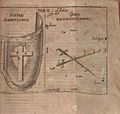Former constellations facts for kids
Former constellations are groups of stars that people once saw as pictures in the sky, just like today's constellations. But these old star patterns are no longer officially recognized by astronomers. Even though they aren't used anymore, they are important for understanding the history of how we map the sky. You can often find them on old star maps!
Contents
What are Former Constellations?
A constellation is a special area of the night sky. It is like a puzzle piece of the sky that contains a group of stars. These stars form a pattern that people imagine looks like an animal, a person, or an object. The International Astronomical Union (IAU) is the official group that decides which constellations are real. They have listed 88 constellations that everyone agrees on today.
Former constellations are star patterns that were once popular but are not on the IAU's official list. Many of these were used for hundreds of years. They show how people in the past looked at and understood the stars.
Why Did Constellations Change?
Over time, the way we map the sky has become more organized. Here are some reasons why some constellations are no longer used:
- Too Many Small Ones: Some astronomers created many very small constellations. This made the sky map confusing.
- Overlapping Areas: Some old constellations overlapped with each other. This made it hard to tell where one ended and another began.
- Standardization: In 1922, the IAU decided to create a clear, official list of 88 constellations. They drew exact borders for each one. This helped make sure everyone used the same sky map. Any constellation not on this new list became a "former constellation."
- Stars Moving: While stars seem fixed, they do move very slowly over thousands of years. This can change how a constellation looks over a very long time.
Famous Former Constellations
Many former constellations have interesting stories. Here are a few examples:
- Argo Navis: This was one of the largest constellations. It represented the ship Argo from Greek myths. This ship carried Jason and the Argonauts on their quest. Because it was so big, the IAU later split it into three smaller, official constellations: Carina (the Keel), Puppis (the Poop Deck), and Vela (the Sails).
- Quadrans Muralis: This constellation represented a "mural quadrant," which was an old tool used to measure star positions. It is no longer recognized. However, the annual Quadrantids meteor shower is named after it. This meteor shower still happens every January.
- Musca Borealis: This was a northern fly. It was sometimes shown as a bee or a wasp. It was located near the constellation Aries. Today, it is not an official constellation.
- Robur Carolinum: This constellation was created in 1679 to honor King Charles II of England. It represented an oak tree. It is no longer recognized.
Their Historical Importance
Even though these constellations are not official anymore, they are still very important.
- Star Charts: You can find former constellations on many old star maps and globes. Studying these old maps helps us understand how astronomy developed.
- Cultural Stories: Many former constellations were part of ancient myths and stories. They show how different cultures saw the stars and created their own sky pictures.
- Scientific Progress: The decision to standardize constellations was a big step in astronomy. It helped scientists around the world use the same maps and share information more easily.
Former constellations remind us that our understanding of the universe is always changing and improving. They are a cool part of sky history!
Images for kids
See also
 In Spanish: Asterismos históricos para niños
In Spanish: Asterismos históricos para niños



